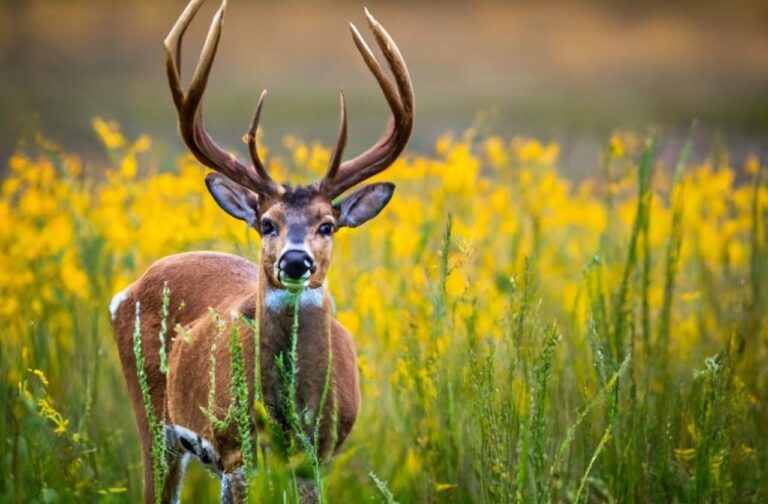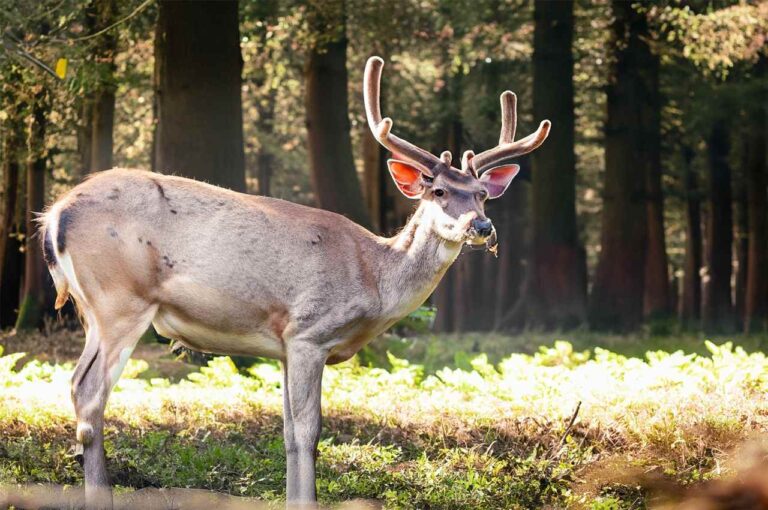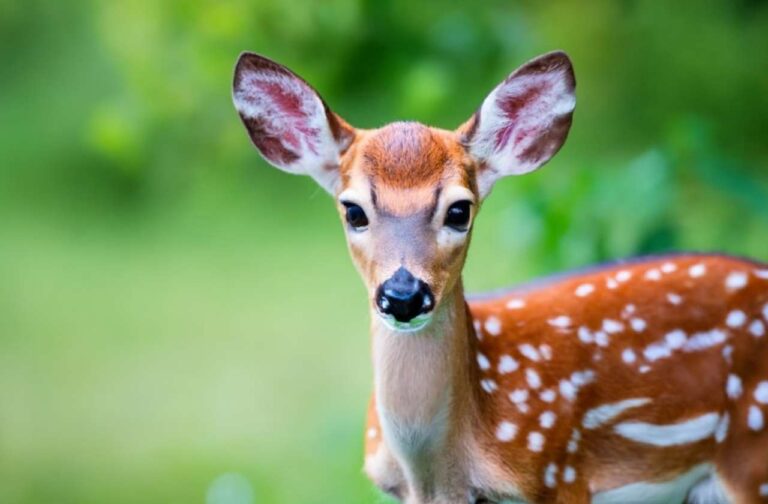What Is An Albino Deer? Crucial Facts Explained!
These rare white-coated creatures of the forest are a fascinating sight. Their pink eyes and absence of pigment make them stand out amongst their brown-furred kin. But what causes albinism in these animals? And just how uncommon are they? This article will explore some key details about these mystical white creatures to shed light on their uniqueness.
| Albino Features | Description |
|---|---|
| Definition | A deer with a complete lack of melanin, the pigment that gives skin, hair, and eyes their color. |
| Appearance | Completely white fur, pink eyes, nose, and hooves |
| Genetics | Caused by a recessive gene that prevents the production of melanin |
| Rarity | Very rare, with an estimated occurrence of 1 in 20,000 deer |
| Distribution | Found worldwide, but more common in regions with colder climates |
| Lifespan | Generally shorter than non-albino deer due to their poor camouflage and increased vulnerability to predators |
| Camouflage | Poorly camouflaged, making them more susceptible to predation |
| Symbolism | Often seen as symbols of purity, innocence, and good luck in various cultures |
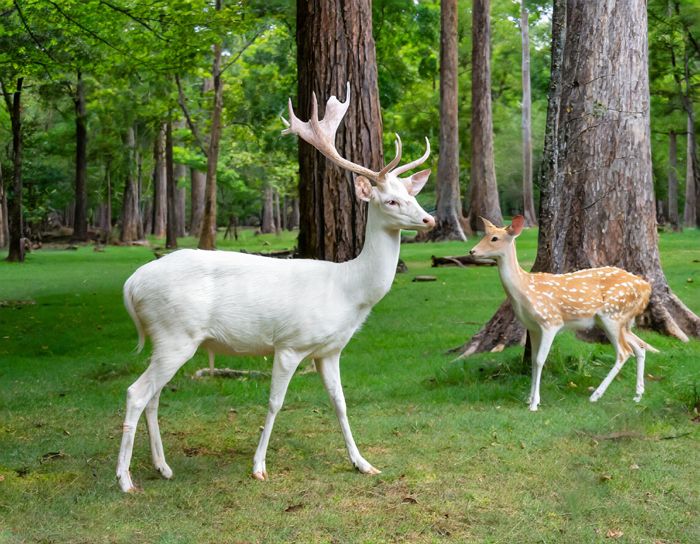
What Causes Albinism in Them?
Albinism is caused by a genetic mutation that results in a lack of melanin pigment in the skin, fur, and eyes. Melanin provides coloration. These white creatures have a recessive gene that stops their body from producing melanin.
Without melanin, they develop all-white coats and skin, along with reddish-pink eyes. Their hooves and antlers also lack pigment and appear pinkish. This gives them their distinctive porcelain look.
How Rare Are They?
These white creatures are extremely rare in the wild. Only about 1 in every 20,000 is born with albinism. Some areas have higher concentrations, with around 1 in 10,000 affected. But overall, they are infrequent.
Researchers believe their rarity is due to natural selection. The bright white coat offers little camouflage against natural backdrops, making them more vulnerable to predators. This reduces their chances of survival and passing on the albino gene.
Where Are They Found?
| Continent | Countries | Rarity |
|---|---|---|
| North America | Canada, United States, Mexico | Common occurrence |
| Europe | United Kingdom, Germany, France | Common occurrence |
| Asia | China, Russia, India | Common occurrence |
| South America | Argentina, Chile, Brazil | Occasional occurrence |
| Australia | Australia | Very rare |
They prefer habitats with plenty of cover, such as forests and meadows. This allows them to better evade predators with their limited camouflage.
Their Elusive Nature
Spotting one of these white creatures in the wilderness is a rare treat. Their bright white coat makes them stand out, but they are extremely elusive and hard to find. They tend to be most active at night when their coloring blends into moonlit forests.
During daylight, they seek out dense vegetation and shaded areas to bed down. They are also more skittish and wary due to increased vulnerability. Quick movements and loud noises will send them bounding away.
Patience and persistence are required to glimpse one. But seeing a white stag or doe is a magical wildlife experience.
Symbolism and Folklore
These white creatures hold a revered place in the myths and legends of many cultures. Native American tribes considered them spirit animals and omens of good fortune. Celtic lore depicts deer with coats as white as snow traversing the fairy realm.
In literature and film, they symbolize purity, innocence, and connection to the spiritual world. They represent the mystery and sanctity of nature and wildlife.
Albino Deer vs. Whitetail Deer

| Feature | Albino | Whitetail |
|---|---|---|
| Color | Completely white fur, pink eyes, nose, and hooves | Brown fur with white patches on the underside and around the tail |
| Pigmentation | Lack of melanin, a pigment that gives color to skin, hair, and eyes | Melanin present, giving them their distinctive brown fur color |
| Rarity | Very rare | Common in North America, Central America, and South America |
| Genetics | Recessive gene that causes a lack of melanin | Dominant gene for brown fur |
| Camouflage | Poorly camouflaged, making them more vulnerable to predators | Well-camouflaged, especially in wooded areas |
| Symbolism | Often seen as symbols of purity, innocence, and good luck | Often seen as symbols of strength, resilience, and the wilderness |
Albino Deer vs Piebald Deer
| Feature | Albino | Piebald |
|---|---|---|
| Color | Completely white fur, pink eyes, nose, and hooves | Varying amounts of white fur on brown skin |
| Pigmentation | Lack of melanin, a pigment that gives color to skin, hair, and eyes | Melanin present, giving them brown fur with varying amounts of white patches |
| Rarity | Very rare | Less rare than albino deer, but still relatively uncommon |
| Genetics | Recessive gene that causes a lack of melanin | Genetic mutation that causes varying amounts of white fur |
| Camouflage | Poorly camouflaged, making them more vulnerable to predators | Can be camouflaged in some environments, but not as well as brown-furred deer |
| Symbolism | Often seen as symbols of purity, innocence, and good luck | Generally not associated with any particular symbolism |
Hunting Regulations
Rules regarding hunting them vary significantly by location. Some U.S. states have placed strict protections, even listing them as endangered. Others allow limited hunting within certain seasons and permit quotas.
Many argue they should not be hunted at all due to their rarity. Conservation groups advocate for national protections. But so far, policies remain inconsistent across different regions.
Impact on Ecosystems
While unusual, these white creatures play an important role in their habitats. As a genetic variant, they contribute to the biodiversity of the species. Albino genes may even confer advantages that bolster the overall health of the population.
But reduced camouflage makes them prone to over-predation. Conservation efforts focused on protecting them help preserve balance within forest ecosystems.
Lifespan in the Wild
On average, they live 5-6 years in natural settings. This is reduced compared to the 10-14 year lifespan of their brown-furred counterparts. The bright white coat and pink eyes make them much more visible to predators.
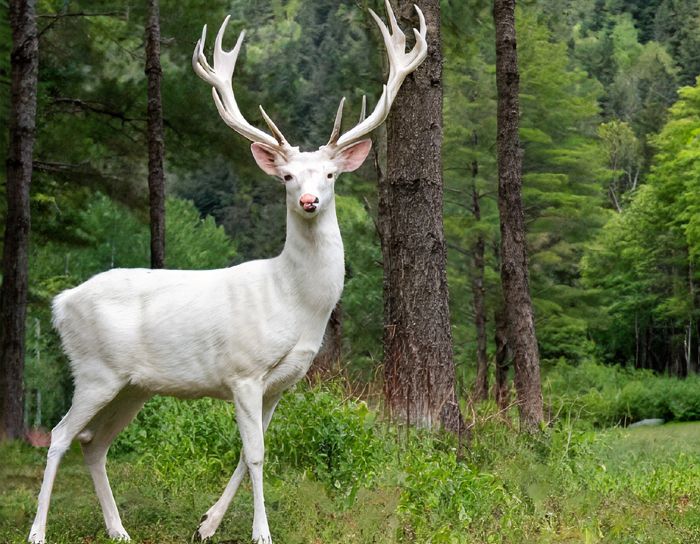
Other factors like climate, food availability, and hunting impact lifespan too. In protected parks and wildlife preserves, they may reach 10-12 years. But their survival remains challenging outside managed habitats.
Capturing Them on Film
Photographing them in the wild provides a chance to document these rare beauties. Patience, proper gear, and knowledge of their habits help increase the odds of capturing them on camera.
It takes time, but the reward is an amazing wildlife photo showcasing their elegance. Spreading their images raises awareness and highlights the importance of conserving their populations.
Conclusion
These white creatures are an exquisite rarity. Their ghostly white features make them exceptional among the brown coats of most kin. While challenges exist for their survival, they play an integral role in forest ecosystems and culture. Continued conservation efforts can ensure their wonder persists for generations.
- Wyoming Deer Season 2025-2026 New Schedule & Rules - 15 September 2025
- Wisconsin Deer Season 2025-2026: WI Deer Hunting Guide [Schedule, Rules, Licenses] - 15 September 2025
- West Virginia Deer Season 2025-2026 Complete Date & Guide - 15 September 2025

